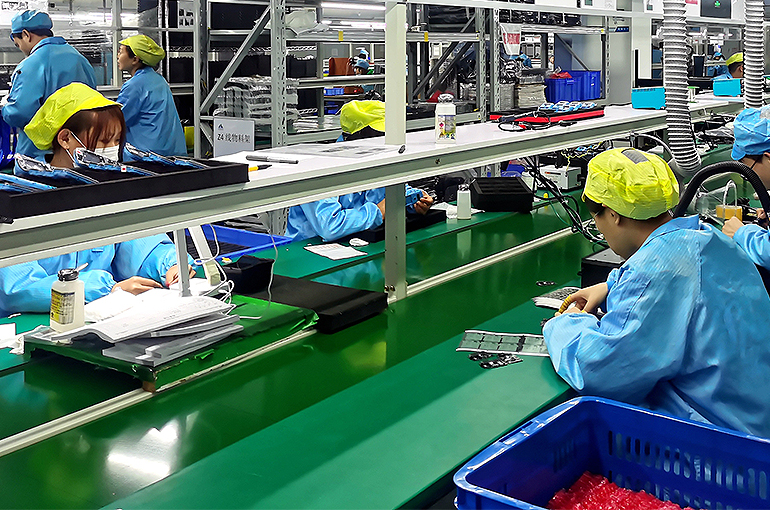 China Is Likely to Retain Half of Global Mobile Phone Manufacturing Capacity, Official Says
China Is Likely to Retain Half of Global Mobile Phone Manufacturing Capacity, Official Says(Yicai) Dec. 20 -- China is expected to retain about half of the world’s smartphone manufacturing capacity, even though the figure will likely decline as the industry moves outside China, according to the director of the China Chamber of Commerce for Import and Export of Machinery and Electronic Products.
Based on the advantages of China’s domestic supply chain, efficiency, and consumer market, the country will remain the center of gravity or supply chain master of the mobile phone manufacturing industry, Gao Shiwang told Yicai.
The global share of China’s mobile phone production is at around 60 percent, Gao said, adding that the global mobile phone production map has China at its center, India and Vietnam as the two major secondary production bases, and countries such as Bangladesh and Turkey as other participants.
The most advantageous country in terms of smartphone manufacturing costs is still China, an industry insider told Yicai. “Based on integrated supply chain, logistics, research, and development, the manufacturing cost of a product in India or Vietnam is 1.2 to 1.5 times more expensive than in China,” the insider noted.
Chinese smartphone manufacturers have recently halted their overseas expansion. This is because they are more cautious because of the market, both at home and in some foreign countries like India, insiders explained to Yicai. But in the long run, their global layout will resume, the insiders added.
Meanwhile, Gao said he believes Apple is a key player in the future of China’s mobile phone manufacturing industry.
The Zhengzhou plant of Hon Hai Precision Industry, better known as Foxconn, is the world’s largest iPhone production base. China’s share in the production and assembly of iPhones reached 96 percent last year, data from market research firm Counterpoint showed.
Apple plans to move 25 percent of its production to India by 2025. But according to Counterpoint, India-made iPhones accounted for only 4 percent of the global production capacity last year, which is expected to rise to 7 percent this year.
Editors: Shi Yi, Futura Costaglione